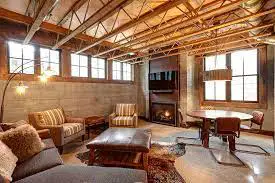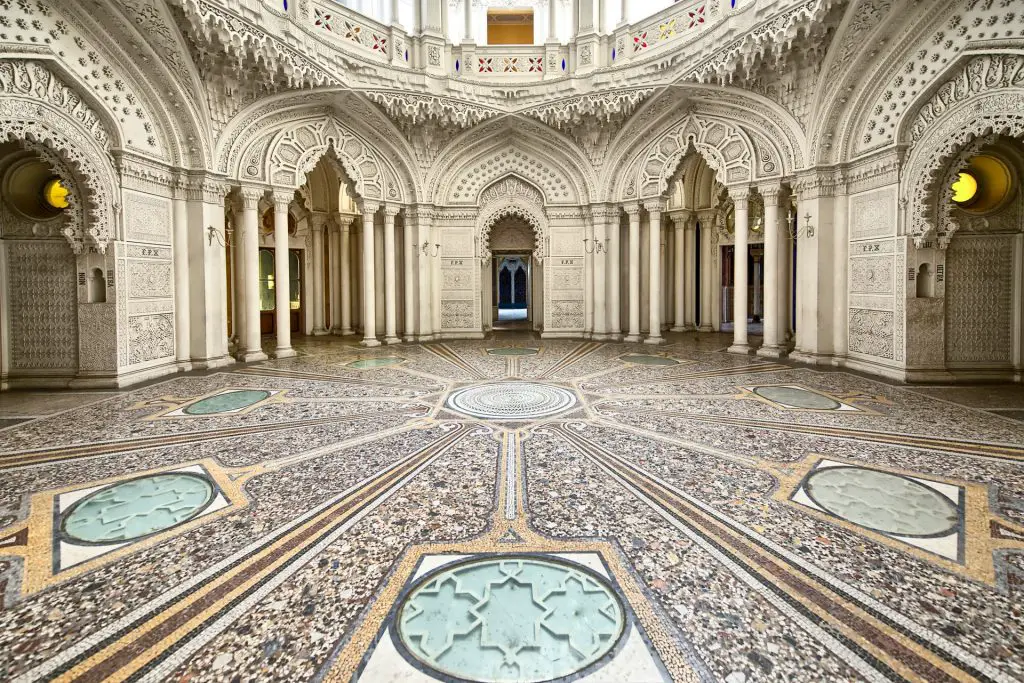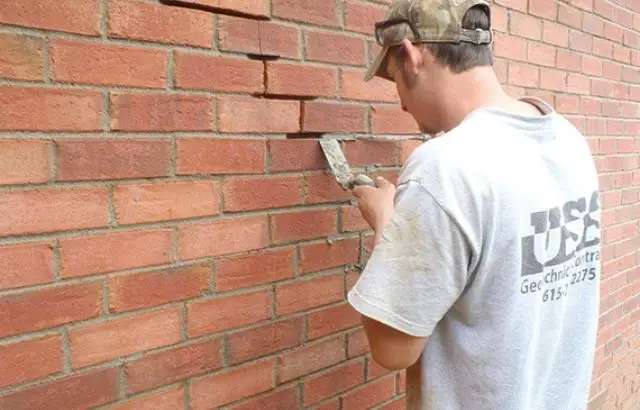For homeowners living in homes with unfinished basements, that space under the rest of the house can be something of a horror. Whether it’s exposed plumbing and installations, moisture and water leaks, or uniform colours and lighting, an unfinished basement that hasn’t received extra love can be wasted because homeowners choose to run their business in the rest of the house instead. Let’s learn how to make an unfinished basement livable.
So, what should they do if a homeowner wants to renovate their unfinished basement to make it more livable?
How to Make an Unfinished Basement Livable

Things You’ll Need
- Hammer
- Chisel
- Patching compound
- Tape measure
- Vapour barrier
- Utility knife
- Foil tape
- Styrofoam board insulation
- Adhesive
- Pressure-treated 2-by-4 boards (sill plates)
- Masonry screws
- 2-by-4 boards
- Nails
- Drywall
- Drywall screws
- Joint compound
- Drywall tape
- Sandpaper
- Primer
- Paintbrushes
- Paint
- Level
- Cement-based levelling compound
- Thinset mortar
- Floor tiles
- Grout
Step 1
Inspect the concrete floor and walls for cracks. Fix any cracks you find by chiseling the area around the crack with a hammer and chisel. Dig deep enough to go under the crack, and then fill the crack with the patch mixture.
Step 2
Cut the vapor barrier sheets to fit the height of the wall plus 2 inches. Attach the steam dam to the walls with aluminum tape, covering the walls and the joint at the junction of the walls and the floor. Fold the adjacent vapor barrier sheets by 4 inches.
Step 3
Apply glue to the back of the polystyrene insulation boards and place the boards horizontally on the walls. Move the boards so that the joints are not aligned and press them firmly against the walls.
Step 4
Install all necessary plumbing and electrical appliances. Hire licensed professionals to do this work if required by local building codes or if you do not know how to do it yourself.
Step 5
Fasten the sill plates to the floor around the perimeter of the room with masonry screws. These are pressure-treated panels that connect the wooden frame of the walls to the floor.
Step 6
Measure the distance between the sill plates and ceiling beams and build wall frames that match the height with standard 2 x 4 planks. As a rule, wall frame wedges should be 16 inches apart but follow local building codes as they may vary. Next, nail the frames to the sills and ceiling beams.
Step 7
Install the drywall to the ceiling beams and wall wedges with drywall screws.
Step 8
Apply grout to the areas between the drywall and cover the grout with grout. Allow to dry, then sand.
Step 9
Paint the ceiling and walls with a primer and leave to dry.
Step 10
Apply two coats of paint to the ceiling and walls.
Step 11
Check the ground level. Fill the lower points with a cement-based leveling compound.
Step 12
Lay the tiles on the floor. Apply a thin mortar to the bare floor of the basement and place the tiles on it. Seal the gaps between the tiles.
Tips for Making an Unfinished Basement Add Value

Waterproofing to prevent odours and leaks
Whether the basement has leaks, puddles, the smell of mould, or mildew on the walls and floor, any level of water damage can not only prevent homeowners from using the space but can cause permanent damage to the home or even illness among household residents. Homeowners whose basements are often damp should look at basement waterproofing before taking steps to make an unfinished basement habitable. This can be accomplished in a variety of ways:
- Installation of dehumidifiers inside the basement
- Replacement or upgrade of old drainage systems
- Use of sealants and coatings inside the basement
- Basement exterior cladding
These and other measures can help homeowners maintain their unfinished basements clean and dry regardless of the weather.
Beautify the basement with lighting fixtures
Basements have less natural light than other parts of the house, which can make them dull. Shaded corners can create an uncomfortable feeling and make the basement seem smaller than it is which can paint the basement space in a negative light. To counteract this, homeowners looking to repair their unfinished basement can add lighting to strategic areas of the basement to beautify it.
Aim for darker areas of the room, especially corners and spaces away from windows or other light sources. Floor lamps, table lamps, and track lamps can be added at a fairly minimal cost where the homeowner needs them.
Adding more light sources will make the basement cleaner and happier, promoting an environment where people want to spend time in the basement. If the basement still feels cramped after adding natural light, consider adding a large mirror to open up the space even more.
Refresh the walls and ceilings with paint
Nothing cleans a room like a new coat of paint, which applies to the basement as much as to other rooms in the house. Old, faded paint can make a room look dirty even when it is clean, making people spend time downstairs.
This can be corrected with a new coat of paint. Breathe new life into the room by adding colour to the walls and removing unpleasant colours, and use it as a tool to unify the space by matching the colour with key accents such as accessories and rugs. Owners should also repaint the ceiling to open up the room and make it brighter.
Set up the rugs
In unfinished basements with exposed concrete foundations, homeowners may find it difficult to feel comfortable and welcome. In addition, concrete can make a room cold and unattractive because the floor will be cold, rough, and hard. To counteract concrete effects in a room, homeowners should have large rugs that cover large spaces. It works for several reasons: it retains some of the heat in the house; helps separate the different basement spaces into their roles, and improves the owner’s planned interior design scheme.
Give the basement a specific purpose.
A room that has no purpose often becomes a pantry or something similar to another living room.
When homeowners can use the basement to use other more affordable rooms in the house, the basement should not be used entirely, even if repaired. Instead, give the basement a specific purpose, and its furniture can be designed with that in mind.
Break up the basement with furniture and partitions
Once the basement roles are defined, it is important to divide the basement into segments that reflect the different roles it will serve. For basements that already have separate rooms; however, this requires a little more effort for homeowners whose basements have an open floor plan. Divide the space using rugs, large furniture partitions, and place partitions at strategic points in the space to divide it.
Frequently Asked Questions
Can you live in an unfinished basement?
Sleeping in an unfinished basement is NOT safe in the long run because of the risk of allergic reactions, lung cancer, carbon monoxide poisoning, difficulty breathing, and death from fire or flood. However, it is possible to sleep in an unfinished basement for a night or two if proper precautions are taken.
How can I make my basement safe for life?
To make your basement lifestyle safer, follow these steps:
- Check that the apartment is correct. Every honest owner and owner of an apartment complex will make sure that the basement apartments comply with the rules.
- Mold and gas test.
- Have a fire and flood evacuation plan.
- Have a plan to prevent and deal with a burglary.
What is the average cost of finishing a basement?
The average cost of finishing a basement, according to HomeAdvisor, ranges from $2,800 to $33,985, with a national average of $18,395. If you want to turn an unfinished space from concrete floors and open channels into a comfortable living space, expect to pay an average of $25 per square foot.
How to finish your basement at a lower cost?
You can save on basement finishing costs by doing things that aren’t code-related: installing battens or doors, painting walls, and decorations, and installing floors.
How can I make my unfinished basement more comfortable?
Add accents and decor to your unfinished basement the same way you would like any other room in your house. Bring extra features that will add warmth, texture, and atmosphere to the basement, in addition to the previous ideas for the basement, such as hanging lights and adding rugs.
Conclusion
Also, keep in mind that basements are often colder than the rest of the house, so you may need a portable heater in the room during the colder winter months.
Even when the basement isn’t finished, that doesn’t mean it has to be dirty. Follow the steps above to feel how you can turn your unfinished basement into a recreational paradise for you and your family!




